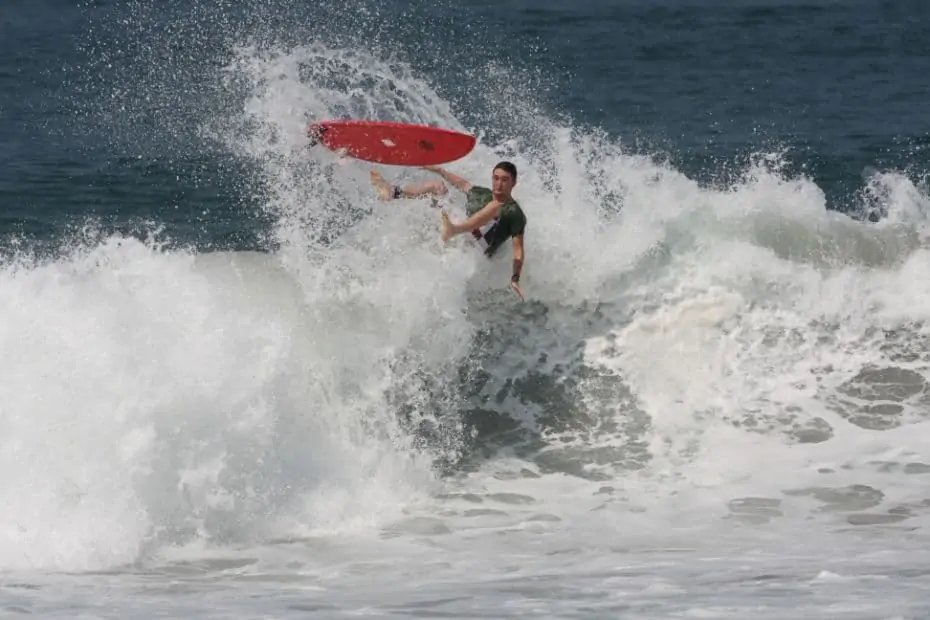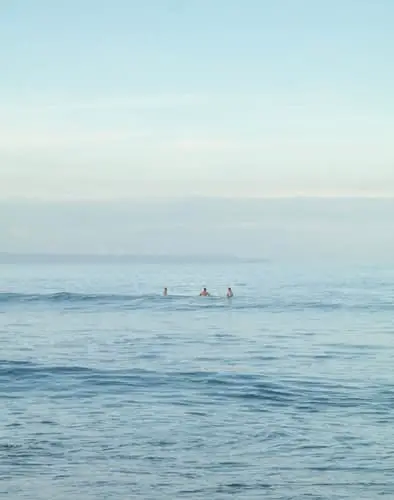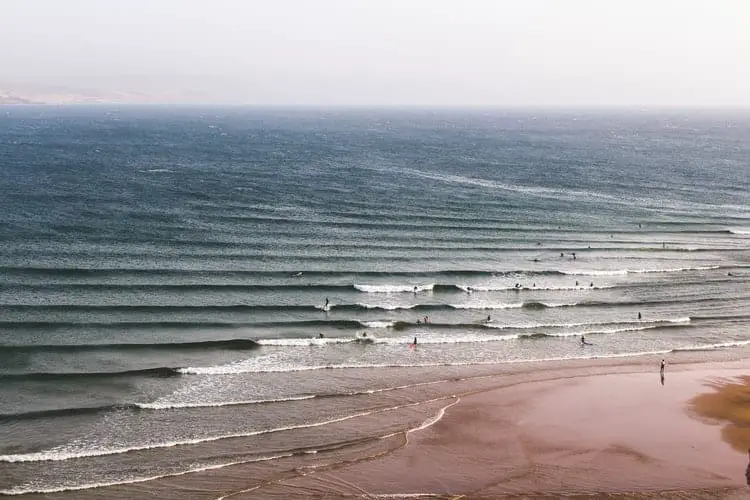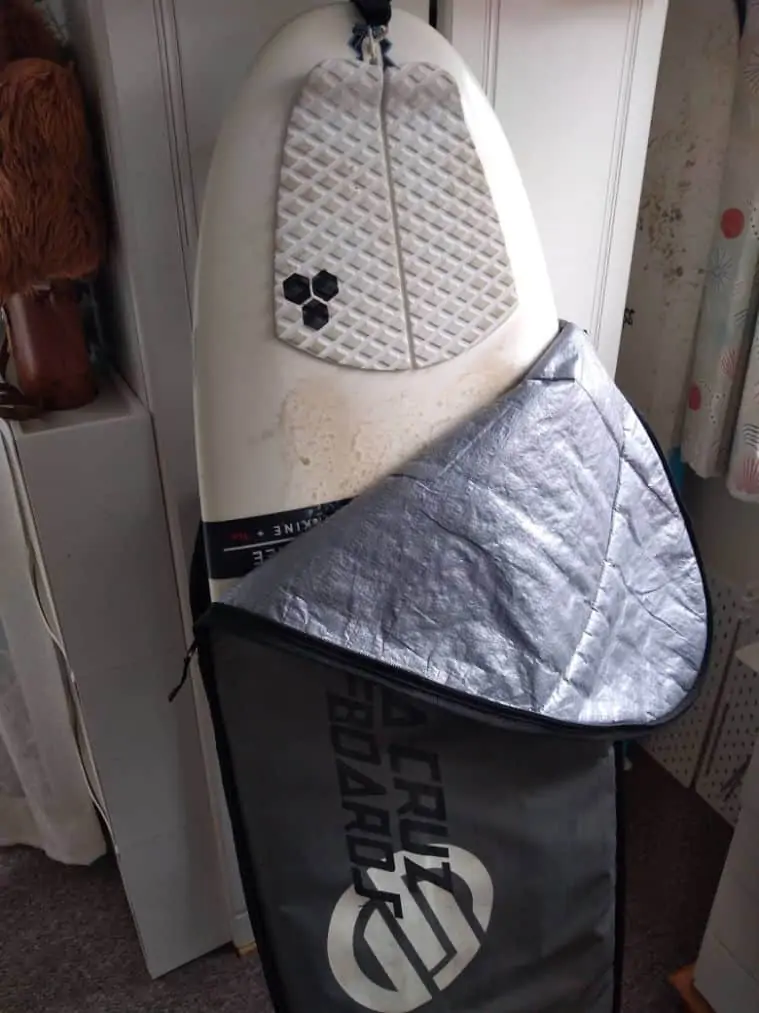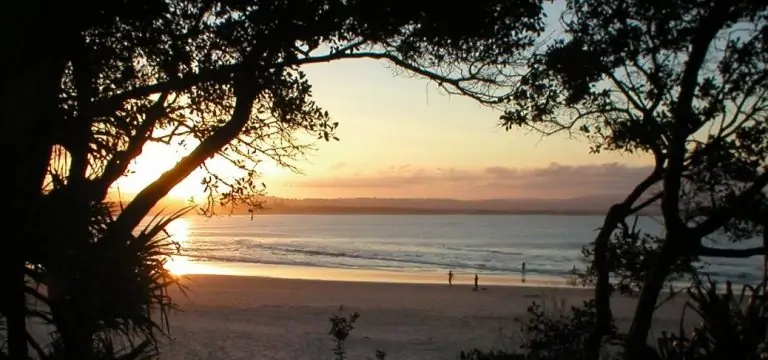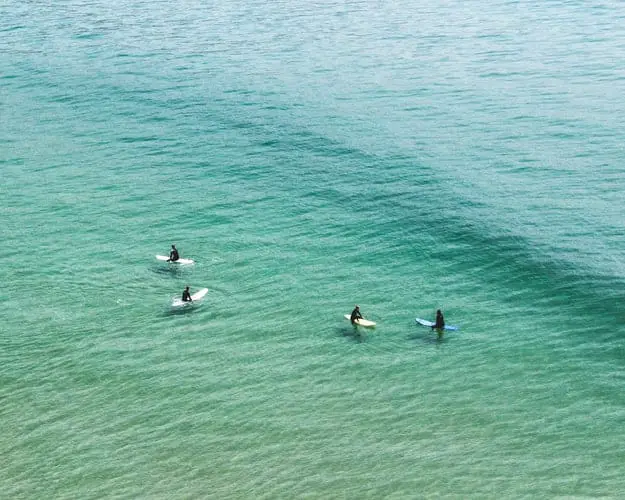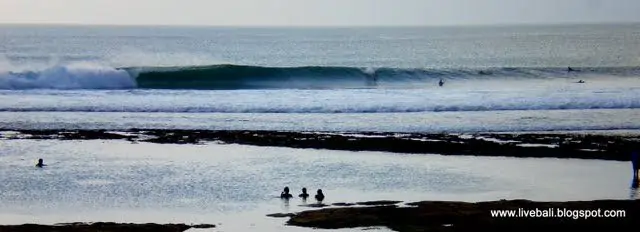8 Tips for Your First Surf Trip!
Heading out on your first surf trip is an awesome experience, filled with adventure and excitement.
However, surf trips can and do go wrong for many, so I wanted to share with you many of the things I’ve learned the hard way to save you the hassle and frustration.
So, with that said, let’s get into these top tips for your first surf trip!
Take Surf Guides with a Grain of Salt
If as a novice surfer you see the phrase “often small” in a surf guide, it’s more often than not something to ignore.
This is because surf guides are mainly targeted at intermediate-advanced surfers.
With this kind of focus, they often overlook the beginner surfer and end up being quite elitist.
This is not to say that the guides are no good, far from it, but more that you need to know this going in.
When reading up on your chosen destination, you only really need some fun, mellow waves, a good place to stay and you should be set.
Anything extra that the guides say about wave size is probably irrelevant for a learner surfer, unless they talk about “long flat spells”, in which case you might want to pay a little more notice!
You can instead check for YouTube videos and Instagram photos from your destination that look like they were captured at or around the time you want to go. This means that you will then get a more realistic idea of how surf is in your chosen destination day to day.
Warm Water for Faster Progress
I may not need to sell the virtues of going somewhere warm for your first surf trip, but it’s actually by far the best way to learn and get better at surfing.
Surfing in warm water means that you will spend more time out in the surf because you won’t get cold.
More time in the surf means more waves and more experience, making for more progress!
On top of this, warm water only needs a few items of surf gear, usually sone boardshorts and a rashguard or wetsuit top.
Wearing fewer items means that you are carrying less weight on your body, meaning that you can pop up that much faster and easier, making your rides better and more fun.
Warm water also comes with a warmer climate, which is great for surfing since it keeps you loose and limber.
Since a huge part of surfing is flexibility, being warm means you will find it easier to do some great surfing.
Max Out the Chill with a Surf Camp
To keep things nice and simple, staying at a surf camp is a great option for an all-round surf vacation solution.
This is because they are situated right on the beach and cater for surfers, meaning that they have everything for your needs and are always going to be welcoming.
You can get lessons through them, as well as surfboard hire, travel to and from the beach.
If you are looking for a chill option that means the least hassle possible while also surfing a bunch, then a surf camp is a great option.
Most of them will be visible on sites like Tripadvisor, so check there to see what the vibe is and judge whether it’s going to meet your needs.
Staying at a surf camp may not be like the Ritz Carlton but, if you’re on a serious surf trip, it will more than do the job you need!
Be Careful with the Calendar
Although the surf guides are targeted at higher level surfers, they are still pretty good at giving you the right time of year to visit a surf spot.
Planning the right surf trip destination for your chosen month will also make for a much more productive time.
For instance, if you go to California in summer, you will find plenty of waves for learners but there can be periods without any waves at all in the height of summer.
As such, a better time to go would be early autumn, when the weather is still warm and the waves are more consistent.
I also used to live in the south west of Spain, an area not famed for its waves but which has some great surf on its day. However, due to local conditions, you could go a month or more without waves in the height of summer, simply because of the local conditions, which is definitely not what you want on your dedicated surf trip!
Obviously, there is no guarantee for getting waves on any surf trip but, if you head to Bali, for instance, you’ll probably find waves any day of the year, just as you might in other places around the globe that receive constant swell.
Forget Your Boards
This might be a controversial one but if you leave your boards behind, you can almost always find boards upon arrival.
I say this again thinking about the novice surfer, for whom the choice of board is not so important.
On top of that, many airlines will charge you top-dollar for your surfboards, which they might even break by carrying them!
I have also carted my boards around the globe with me on dozens of surf trips and can attest that it is a hassle to carry your big, heavy surfboards everywhere and not always for the faint of heart.
Deciding on whether to take your surfboards on a surf trip really comes down to your budget, destination and choice of surfboard.
Be sure to know the charges for surfboards as well as how much you might be able to hire boards for in your destination.
If you are more intermediate level then you may well find more benefit in taking your boards with you as it can be harder to find good quality surfboards for hire.

Take a Spare Leash (or Two)
Regardless of whether you decide to hire boards or take your own, I would always suggest taking a spare surf leash with you.
This is for two main reasons:
- Hire surfboards often come with really old leashes that are not reliable
- Powerful surf can break leashes, leaving you potentially stranded
- Leashes are light and compact enough to fit in any travel bag, while also fitting on any surfboard
Leashes and Hire Boards
If you hire a board, look at the leash they give you and judge whether the Velcro on it looks old and tattered. If so, then swap it out for your own leash before heading out into the surf.
Be sure to tell the hire people this so that they don’t try to take the board back off you with your brand new leash on it!
Powerful Waves
As for surfing in powerful waves, you will want to change leashes every 6 months or so. This is advice I had to learn the hard way after a nearing drowning in Indonesia following a broken leash out at a remote surf spot (I actually have the whole thing captured on my ancient GoPro somewhere but can’t bring myself to watch it).
The power in these waves means that they put a lot more strain on the leash each time you fall off and can wear them out much more quickly.
That said, if you are only going to be surfing mellow, small waves closer to shore then this is likely not going to be an issue for you.
What Leash?
Lastly, if buying a leash to take with you, I’d recommend going for one that is as long or the same length as your ideal surfboard length.
Any of the trusted brands will be fine, just make sure you get the right length. Here is a selection of the best leashes available on Amazon to get you started
Top Tip: don’t go for a comp leash – although these are cheaper, they are also thinner, so they will break more easily!
Don’t Get Burned!
In this case, I’m talking about your skin.
Some might want to go on a surf trip just to get a tan, but unless you are one of the lucky few people whose skin can handle the intense sun, you’ll want to keep yourself protected.
This is because being out in the surf and on the water in the daytime means an intense hit of UV rays.
You will notice this even on cloudier days as the rays seem to reflect off the surface off the surface of the water, right onto you, the surfer sitting upright on the board!
This is another one I’ve had to learn from the school of hard knocks, having gotten burned more times than I care to remember, which is no fun with my fair skin!
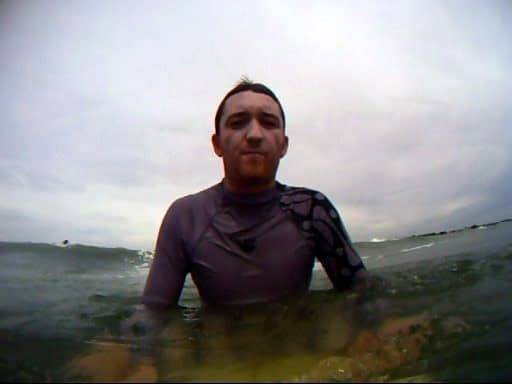
To stay protected, my main tips are as follows:
- Get a good quality rash guard top with UPF50
- Cover other areas with a powerful, waterproof sunblock
A rashguard that offers UPF 50 is a great option as these protect your torso from rub while also keeping you out of the intense sun.
These rash guards from Amazon are rated highly and will do a great job for men, while the women’s ones here are also brilliant.
As for sunscreen, these products on Amazon will again do the job admirably, although I would particularly recommend Zinka and Headhunter for surfing.
Respect the Locals
This one comes as standard for just about anywhere you surf, perhaps even for your home break (!), but when traveling, you need to be that much more respectful of the locals.
As you will no doubt stand out, be it from your accent, look or just general demeanor, you should make an effort to stay low-key when out in the surf.
Surfing can get extremely territorial, although this is usually reserved for more of the advanced spots.
So, my advice would be to survey the line up to see who the main locals are and just be sure to stay out of their way, taking care never to drop in on anyone and only going for waves when you are certain that it’s your turn.
For more tips on this, be sure to check out my dedicated guide to surfing a crowded lineup as a surf lineup can be a nightmare if you don’t know how to manage it!
